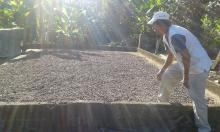Land Library
Welcome to the Land Portal Library. Explore our vast collection of open-access resources (over 74,000) including reports, journal articles, research papers, peer-reviewed publications, legal documents, videos and much more.
/ library resources
Showing items 1 through 9 of 50.O processo de luta e construção do Assentamento Palmares II, o maior do estado e um dos maiores do Brasil, teve início em 1994, quando cerca de 2.500 famílias sem-terra ocupam uma área sob concessão da empresa Vale S. A., sendo em seguida despejadas.
A comunidade Uruçu está situada na zona rural do município de Mairi, Bahia-Brasil, próximo ao Rio Jacuípe, clima semiárido, subtropical e ameno. A precipitação pluviométrica média anual varia entre 600 a 800 milímetros, coordenadas geográfica -11.642196 -40.263096.
La Asociación Agropecuaria Río Punino se conformó por familias sin tierra de diversos lugares de Ecuador que migraron a la Parroquia Nuevo Paraíso. Ellas comenzaron la regularización del derecho propietario sobre tierras explotadas y abandonadas por MAPRESA-ENDESA.
O caso da Fazenda Lage (Goiás, Brasil) é um caso onde o acesso à terra se dá por compra própria de uma pequena parcela de terra, que vai sendo aumentada com o decorrer do tempo.
Professor Kjell Havnevik is retiring from the Nordic Africa Institute (NAI) in 2015.
This paper, which focuses on the Chinyanja Triangle (CT), an area inside the Zambezi River Basin, characterises three distinct farming subsystems across rainfall gradients, namely maize-beans-fish, sorghum-millet-livestock and the livestock-dominated subsystem.
The main objectives of this research report are to outline the various policies that have been implemented through statutes in the past, and to introduce the legislation regarding rural development and land reform.
Greening rural development can stimulate rural economies, create jobs and help maintain critical ecosystem services and strengthen climate resilience of the rural poor.
The agriculture sector faces the challenge of providing adequate food to a growing world population. There is limited scope to expand arable land, and unpredictable weather, floods, and other disastrous events make food production even more challenging.



